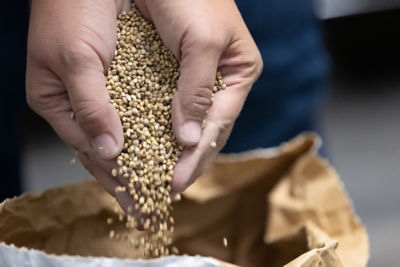Causal Agent
Calcium deficiency in the distal end of the fruit
Distribution
Worldwide
Symptoms
The diagnostic symptom is a light tan lesion turning to a dark brown sunken area at the blossom-end of the fruit. The lesion typically enlarges and becomes more sunken and leathery, and is often accompanied by a dry rot. A black mold may grow on the surface of the lesion. Sometimes there is an internal black rot of tissue in the center of the fruit with little or no external symptoms. Normally, fruit that are about half developed are the first to show symptoms.
 Brown, leathery lesions developing on immature green fruit. Note water-soaking of fruit tissue immediately surrounding each lesion.
Brown, leathery lesions developing on immature green fruit. Note water-soaking of fruit tissue immediately surrounding each lesion.
 Sunken, necrotic lesions at blossom-end of fruit. Note colonization of necrotic tissue by a saprophytic fungus. (Courtesy of William M. Brown Jr., Bugwood.org)
Sunken, necrotic lesions at blossom-end of fruit. Note colonization of necrotic tissue by a saprophytic fungus. (Courtesy of William M. Brown Jr., Bugwood.org)
Conditions for Development
In general, any soil or growing condition affecting the uptake of calcium may result in this disorder. Blossom end rot often occurs during alternating periods of high and low soil moisture as well as rapid plant growth. Other conditions that could cause blossom-end rot include excessive soil salinity and root damage.
Control
The use of tolerant varieties may help reduce the occurrence of this disorder. Applications of lime or calcium fertilizers before planting are commonly used to reduce the incidence of blossom-end rot. Irrigation during dry weather or applications of mulch to provide a constant moisture supply to the plant can help prevent this problem. The use of excessive nitrogen, especially in the ammonium form. should be avoided since this increases the demand for calcium by the plant and reduces the availability of calcium in the soil. Fields that are difficult to irrigate uniformly or those with high salinity should be avoided. Root injury caused by mechanical damage or disease can exacerbate this condition and should be avoided.




